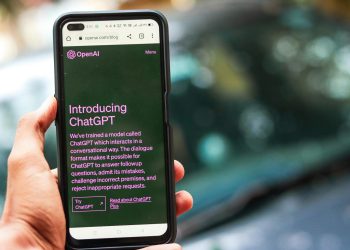Understanding Large Language Models
Introduction to LLMs
Large Language Models (LLMs) are shaking things up in the world of artificial intelligence. These whiz-bang creations are like virtual wordsmiths, trained on boatloads of internet mumbo-jumbo to churn out text that's human-ish. Forget the geeky jargon—what they really do is crank out essays, poems, code, or chitchat like a pro. Big names in this game include GPT-3 and BERT, the heavyweight champs of the text-processing ring.
| Task | Example |
|---|---|
| Text Summarization | Shrinking down articles |
| Machine Translation | Changing languages on the fly |
| Question Answering | Providing answers like a trivia whiz |
| Speech Recognition | Turning spoken words into text |
| OCR | Spotting text in pictures |
| Handwriting Recognition | Translating chicken scratch to digital notes |
LLMs are revolutionizing how we handle language in tech, turning what used to be sci-fi into everyday magic (IBM).
Importance of LLMs
Why are LLMs important? Because they're everywhere now. They're not just language sprinters but marathon runners handling translations, answering your questions, and beyond (Built In). Everyone from the IT whizzes to the local baker is getting on the LLM train to keep their operations slick and their customers happy.
Here's why these models are the bees' knees:
- Efficiency: They ace the grunt work, automating tasks like turning long reads into bite-sized bullets.
- Scalability: Big jobs? No problem. They eat data for breakfast.
- Flexibility: Multilingual and cross-industry—these models aren’t picky.
- Accuracy: You can bank on their answers and data crunching thanks to smart fine-tuning techniques.
Trailblazers like IBM are pushing the envelope with LLMs, setting the stage for breakthroughs that lead to jaw-dropping innovation (Yellow.ai Blog). Curious about what makes these models tick? Check our piece on transformer models to geek out on the architecture.
The buzz around LLMs isn’t going anywhere. They're the shiny new toy on the tech playground, attracting everyone from starry-eyed researchers to seasoned tech mavens. By letting these models fire up their engines, businesses are hitting the NOS button on their growth and change (Yellow.ai Blog). Want to see these tech marvels in action? Dive into applications of large language models and watch them turn industries on their heads.
Key Players in LLMs
When it comes to big fish in the pond of large language models, OpenAI and Google are the names you should know. These folks have brought us innovations that completely change how we think about natural language processing.
OpenAI's GPT Models
Let's talk about OpenAI's GPT family first. These Generative Pre-trained Transformers are nothing short of rock stars in the LLM universe. From GPT-1 to the latest GPT-4, they've upped the game in both making and understanding text.
-
GPT-3: Dropping in 2020 with a staggering 175 billion parameters, GPT-3 turned heads by churning out text that mirrors human writing with impressive flair. It's not just for writing stories—folks use it for crafting code, too.
-
GPT-4: Building on the hype of the earlier models, GPT-4 powers ChatGPT, a star performer in conversational AI. It’s like having a chameleon on your team, with its knack for generating intricate text across different languages and styles.
| Model | Parameters (Billion) | Year Released | Key Features |
|---|---|---|---|
| GPT-1 | 0.12 | 2018 | Debut round |
| GPT-2 | 1.5 | 2019 | Bigger, smarter dataset |
| GPT-3 | 175 | 2020 | Crazy-good text gen, chats |
| GPT-4 | Confidential | 2023 | Next-gen language skills, multi-lingo |
For tech junkies, these models are powered by transformer architecture—nerdy cool stuff right there.
Google's BERT/RoBERTa
Switching to Google, their BERT and RoBERTa models have made a splash in the scene, too. They introduced ways to really get a grip on the meanings of words in a sentence, which does wonders for various NLP jobs.
-
BERT (Bidirectional Encoder Representations from Transformers): Arriving in 2018, BERT uses bidirectional training to get the lay of the land around words. This means it’s a whiz at activities like answering questions and figuring out sentiment, practically with its eyes closed.
-
RoBERTa (A Robustly Optimized BERT): Think of RoBERTa as BERT on steroids. More data, more time to train, which translates to even juicier performance metrics.
| Model | Core Architecture | Year Released | Key Features |
|---|---|---|---|
| BERT | Transformer | 2018 | Looks both ways, like a good crossing guard |
| RoBERTa | Beefed-up BERT | 2019 | Mega-datasets, extended training, powerhouse |
Google's models are like Swiss army knives for multiple applications, making them popular tools for decoding human language.
Diving into language models, both OpenAI and Google have some serious street cred. They're pushing the envelope and offering mind-blowing tools for innovation across different sectors.
Applications of LLMs
Large language models (LLMs) have shaken up the world of generative AI, bringing in a bunch of handy uses. Let's chat about two big ones: text churnin' and content shrinkin'.
Text Generation
Cooking up text is where LLMs really shine. Take Open AI's GPT-3, it's like the chatty friend who always knows what to say. Give it a nudge with a prompt and boom, it spits out impressively human-like text. This talent gets spread across areas like jazzing up marketing pitches, tinkering with complicated code, or even just scribbling out essays.
Use Cases
- Marketing and Content Creation: Companies tap into LLMs to crank out swanky content fast, boosting their output. Fresh startups and creative agencies find these models a cheap and funky way to push productivity.
- Coding Assistance: Programmers lean on LLMs for code snippets, helpful hints, and a hand with pesky bugs.
- Conversational AI: These models shape up smart chatbots and virtual aides, jazzing up customer support vibes.
| Spot | Example |
|---|---|
| Marketing | Blog posts, social media chatter |
| Coding | Code helpers, auto complete |
| Chatbots | Customer chats, virtual pals |
Got your interest piqued on text making? Jump over to our take on large-scale language generation.
Content Summarization
Content shrinking is another fab trick, where LLMs snatch the golden nuggets from large texts and lay them out neatly. This comes in super handy for biz folks drowning in flood of information.
Use Cases
- News Outlets: Boiling down long reads so folks get the juice quick.
- Research: Serving up a quick taste of sprawling papers or studies.
- Legal: Trimming hefty legalese, making it plain and simple for review.
The secret sauce? These models "get" what's vital in a text and piece together a neat wrap-up.
| Spot | Example |
|---|---|
| News | Article shrinkdowns |
| Research | Report briefs |
| Legal | Slimming legal docs |
Want more on content crunchin'? Stroll through our chat on applications of large language models.
All said and done, LLMs and their love for transformers have supercharged a bunch of gigs, courtesy of their text spinning and content crunchin' prowess. The broad horizons of AI in business will keep evolving, promising heaps of innovation. Curious about transformer tricks? Peek at how do large language models work.
Training and Architecture
Transformer-Based Models
So, let's chat about these transformer-based models that seem to be running the show in the land of large language models (LLMs). These fancy models are the backbone of things like Siri or your favorite chatbot, all thanks to their cool tricks with self-attention. Transformers are rockstars for munching through long strings of text, grasping word meanings, and spotting connections between words and phrases (Amazon Web Services).
Now, imagine if you're in a race, and your competitor's slow, snail-like. That's old school! Transformers process all data chunks simultaneously, like a super-speedy racetrack. This parallel processing cuts down time and gives these models the power to handle ginormous amounts of data. And with GPUs in the mix, it's a techie's dream come true.
Parameter Size and Training Process
Speaking of large, we're talking ginormous! Think billions of parameters here folks. These models absorb data like a sponge, from a gazillion web pages on the Common Crawl to endless entries on Wikipedia (Amazon Web Services).
| Model | Parameters (Billions) | Training Data (GB) |
|---|---|---|
| GPT-3 | 175 | 570 |
| BERT-Large | 0.34 | 16 |
| T5 | 11 | 750 |
Source: Amazon Web Services
The training spin for these models starts with unsupervised learning. Toss in a little Wikipedia, maybe some GitHub goodies, and these models start making sense of words, their bonds, and context twists (Elastic). This nifty process makes them aces at tasks like text generation and summarizing content.
But we're not done yet. There's a thing called fine-tuning, where models get some polishing for special jobs like translation or sorting texts. Even cooler is prompt-tuning, where with a smidgen of examples, these models take on the world in what's called few-shot or zero-shot tasks (Elastic).
Curious about GPT-3? Check out our handy guide on gpt-3. Want the scoop on how these models work their magic? Hop over to our article on how large language models function.
When you dig into transformers and their weighty training, there’s a treasure trove of potential for businesses. Tap into these models and watch as they turbocharge innovation and boost efficiency like never before.
Industries Benefitting from LLMs
Large language models (LLMs), like GPT-3 and BERT, are shaking up a bunch of fields by simplifying tasks and boosting efficiency. Two areas that especially gain from these tech wonders are the world of shopping—both in stores and online—and the vast field of healthcare.
Retail and eCommerce
In the shopping world, whether you’re clicking online or strolling through a store, LLMs make buying stuff smarter. They’ve turned customer service into a high-tech conversation, with chatbots that seem to know just what you need. By digging into what you've bought before or just glanced at, these systems give spot-on suggestions that can make shopping feel less like a chore and more like a friendly nudge in the right direction.
| What's Used | How It Helps |
|---|---|
| Smart Picks | Suggestions that fit your style, based on what you've already shown interest in |
| Clever Bots | Your go-to for quick answers and doing your shopping tasks |
| Future Forecasts | Keeps the shelves stocked with what you’ll want, reducing the "out-of-stock" issues |
For more on how language models are reshaping customer interactions, check out the generative ai models section.
Healthcare Applications
When it comes to your health, LLMs are like having a super-brain on your side. They’re used in diagnosing illnesses, keeping track of your well-being, speeding up drug research, and making sense of your health records. By crunching heaps of medical info, these models help doctors and nurses do their job better, which means you get better care.
| Task It's Used For | What It Does for You |
|---|---|
| Diagnosing Illnesses | Faster, more reliable results that get you answers sooner |
| Health Tracking | Keeps an eye on your well-being around the clock |
| Discovering New Drugs | Gets new medicines on the shelves sooner |
| Sorting Health Records | Makes your doctors smarter by giving them all the right info at the right time |
To get more scoop on how LLMs are playing a role in healthcare, hop over to our applications of large language models page.
Large language models are like a fresh breeze, blowing through all kinds of industries and leaving a trail of innovation in their wake. With these allies, businesses and professionals are stepping up their game. And as the future unfolds, LLMs are only going to get better—solving more problems and opening new doors in all sorts of areas.
Ethical Considerations
When we dive into using those fancy AI brains, like big language models, it's super important to chat about the ethics side of things. We gotta keep an eye on those pesky biases around gender and culture, and think hard about representation and diversity.
Gender and Cultural Biases
Let's get real about these biases. Big language models, like ChatGPT, sometimes have a mind of their own with how they answer questions. For example, they seem to lean towards dude opinions. When it comes to culture, they usually nod towards Uncle Sam's ways. Oh, and don't get me started on politics—they dance to a liberal beat (PNAS Nexus). These biases can throw off the balance and fairness of the chat these models spit out.
| Bias Category | Leanings |
|---|---|
| Gender | Male-focused viewpoints |
| Cultural | American-centric |
| Political | Tend to favor the liberal, left-libertarian crowd |
| Personality/Morality | Stereotypical character reflections |
These slants can make it tricky to see the full spectrum of human experiences in what these models generate. Knowing this, businesses have to work their tails off to soften these biases for more fair and unbiased outputs.
For juicy details on these biases and how to tackle them, be sure to scope out our bit on bias in language models.
Representation and Diversity
There's another big theme here: representation and diversity. Most large language models are trained on content from WEIRD folks (Western, Educated, Industrialized, Rich, Democratic) (PNAS Nexus). This kinda narrow training scope can shortchange the model's ability to grok the full range of global perspectives.
| Group Type | Training Presence |
|---|---|
| WEIRD Populations | Through the roof |
| Non-WEIRD Populations | Scraping the bottom |
Models with an English-as-a-first-language attitude find it harder to appreciate and craft messages that reflect the variety of non-Western cultural vibes and lingo. Makes using them in global language AI models a real head-scratcher sometimes.
Any business worth its salt should get how limiting this can be. They have to make a point of using datasets that show off more cultures, tongues, and lifestyles. This way, any AI tool they're rolling out will work better for a wider audience. Want to chew over this some more? Head over to our talk on fairness in language models.
By really getting and dealing with these ethical points, we can use the power of these large language models responsibly—paving the way for innovation while keeping the fairness and inclusion flags flying high.











